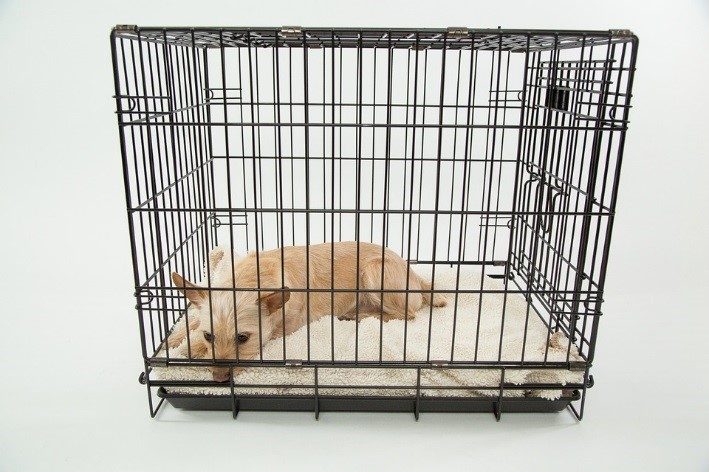Whether you’re just moving down the street, across the city, to a new state or an entirely new country, there are a number of steps you can take before moving day to ensure the process is as smooth and stress-free as possible for both you and your pet.

Get Your Documents In Order
If you’re moving out of state, to a new country or plan on flying with your pet at any point, you’ll need to first obtain a few different documents. Schedule an appointment with your vet to have your pet thoroughly examined before you move, as most states and airlines require you to obtain a certificate of veterinary inspection (CVI; or health certificate) in order to cross state lines or board an airplane. During this vet appointment, be sure to also:
- Ask for a copy of their medical records
- Make sure their vaccinations are up to date
- Obtain refills for any prescriptions they require
- Inquire about sedatives and/or motion sickness prevention medications
If your pet is microchipped you should update the address associated with their chip by calling the company or going online and updating it yourself. Also keep in mind that most countries (and even some states, such as Hawaii) have their own unique procedures for quarantining and allowing the entry of foreign animals onto their land. Take the time to research your destination’s particular procedural requirements so you don’t run into any issues or surprises along the way.
Avoid Flying with Your Pet if Possible
The Humane Society of the United States strongly recommends you avoid flying with your pet unless it’s absolutely necessary, as it’s particularly stressful for them and poses more health and safety risks than driving. This is especially true if your pet has a “pushed in” face (e.g. pugs, bulldogs, Persian cats, etc.), as these types of animals have abnormally short nasal passages that make them more susceptible to potential risks of flying, including heat stroke and oxygen deprivation.
If you have no choice but to fly with your pet, be sure to contact your airline prior to your departure date to ensure all requirements are met and that there is enough space to accommodate them.
Move Gradually and Try to Stick to Their Routine
Taking the time to pack things up gradually in the weeks before the move rather than all at once in the days leading up to the move will help reduce stress levels for both you and your pet. It helps you because you’re not procrastinating, and it helps your pet get used to seeing boxes accumulate throughout your home, better preparing them for the imminent change.
In the weeks and days leading up to the move do your best to adhere to their normal routine (i.e. walk times, feeding times and play times), as doing so will help your pet maintain a sense of comfort and continuity and can significantly reduce their stress levels once the big day arrives.
If you have a cat or small dog that is only exposed to its carrier when going to the vet, he or she has probably developed a somewhat negative perception of it. Place the carrier in a common area of your home with the door open and one of their favorite toys or blankets inside so he or she can examine it carefully and become more comfortable with it prior to the move.
Similarly, while many dogs love car rides, others only associate them with going to the vet. If this is the case for your dog, take the time to help them develop a more positive perception toward the car by taking short trips to a local dog park or anywhere else they enjoy.
Minimize Disruptions and Be Prepared
On the actual day of the move, help reduce your companion’s stress levels by keeping them in the quietest, least disruptive area of the home possible (e.g. in the backyard, in an empty bedroom or in a boarding kennel for the night, if possible). Most moving companies require the area to be free of pets before they begin working for safety and liability reasons, so if you’re working with movers you’ll likely need to come up with a solution prior to move day. Before you hit the road, make sure all the necessities are easily accessible, including:
- Food
- Water
- Treats
- A few toys
- An animal first aid kit
- Disposable litter boxes
- Towels and cleaners in case of accidents
- Any necessary medications
For more helpful moving tips or to stay up to date on all the latest details about Brohn Homes’ new home availabilities, specials, events, etc., contact us online today!